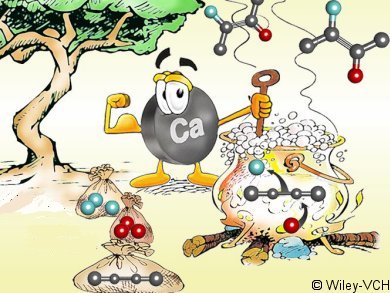Carboarylation of internal alkynes is a simple route to all-carbon tetrasubstituted olefins, which are found in many natural products and pharmaceuticals. However, traditional approaches to this reaction have required expensive and toxic transition metal catalysts to activate the alkyne, leading to highly sensitive vinyl metal intermediates.
Meike Niggemann and Liang Fu, RWTH Aachen University, Germany, have reported a concise, inexpensive strategy using a Lewis-acidic catalyst based on calcium, one of the five most abundant elements in the earth’s crust, to effect the concomitant introduction of two carbon groups to an alkyne. The first carbon group acts as an electrophile to generate a trisubstituted vinyl cation, which is then trapped by the second, a carbon nucleophile. The highly reactive nature of the cationic intermediate allows for the use of deactivated arenes as nucleophiles, whereas the robust calcium catalyst offers excellent functional group tolerance, allowing for the synthesis of bioactive species such as chromenes and dihydroquinolines.
- Calcium-Catalyzed Carboarylation of Alkynes,
Liang Fu, Meike Niggemann,
Chem. Europ. J. 2015.
DOI: 10.1002/chem.201406503




